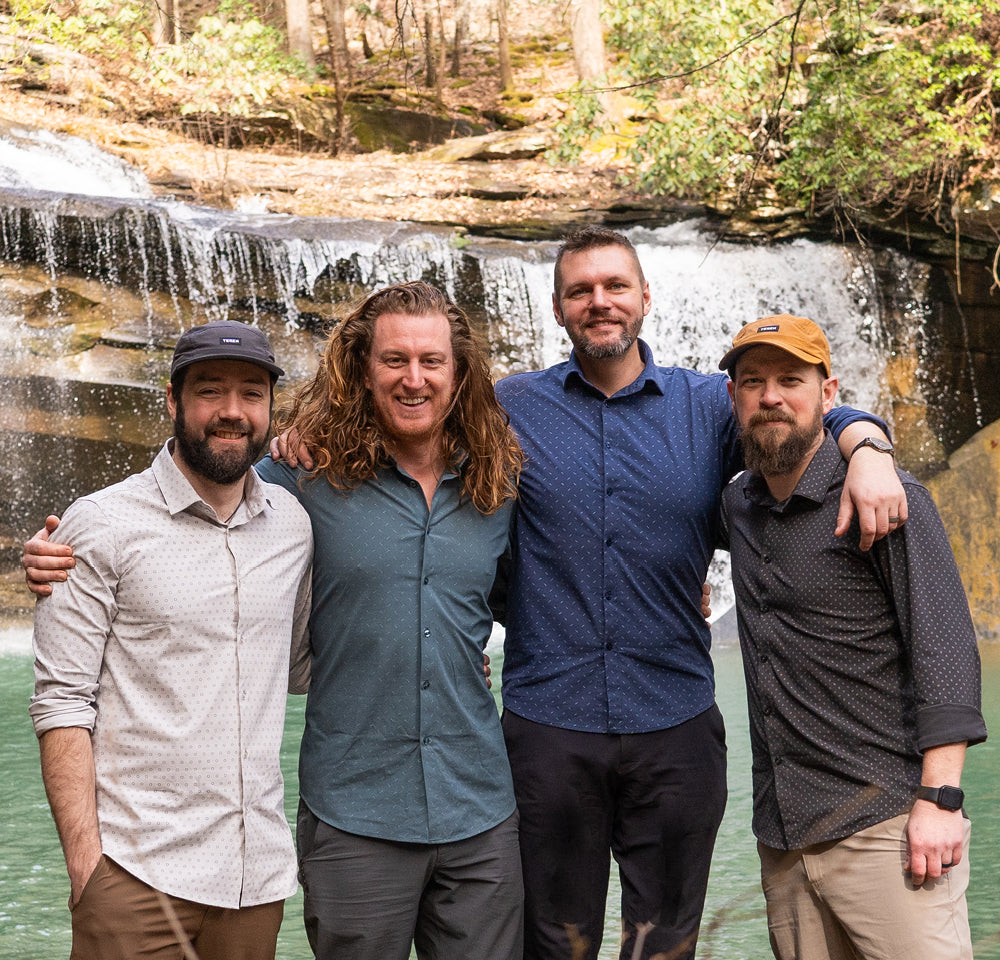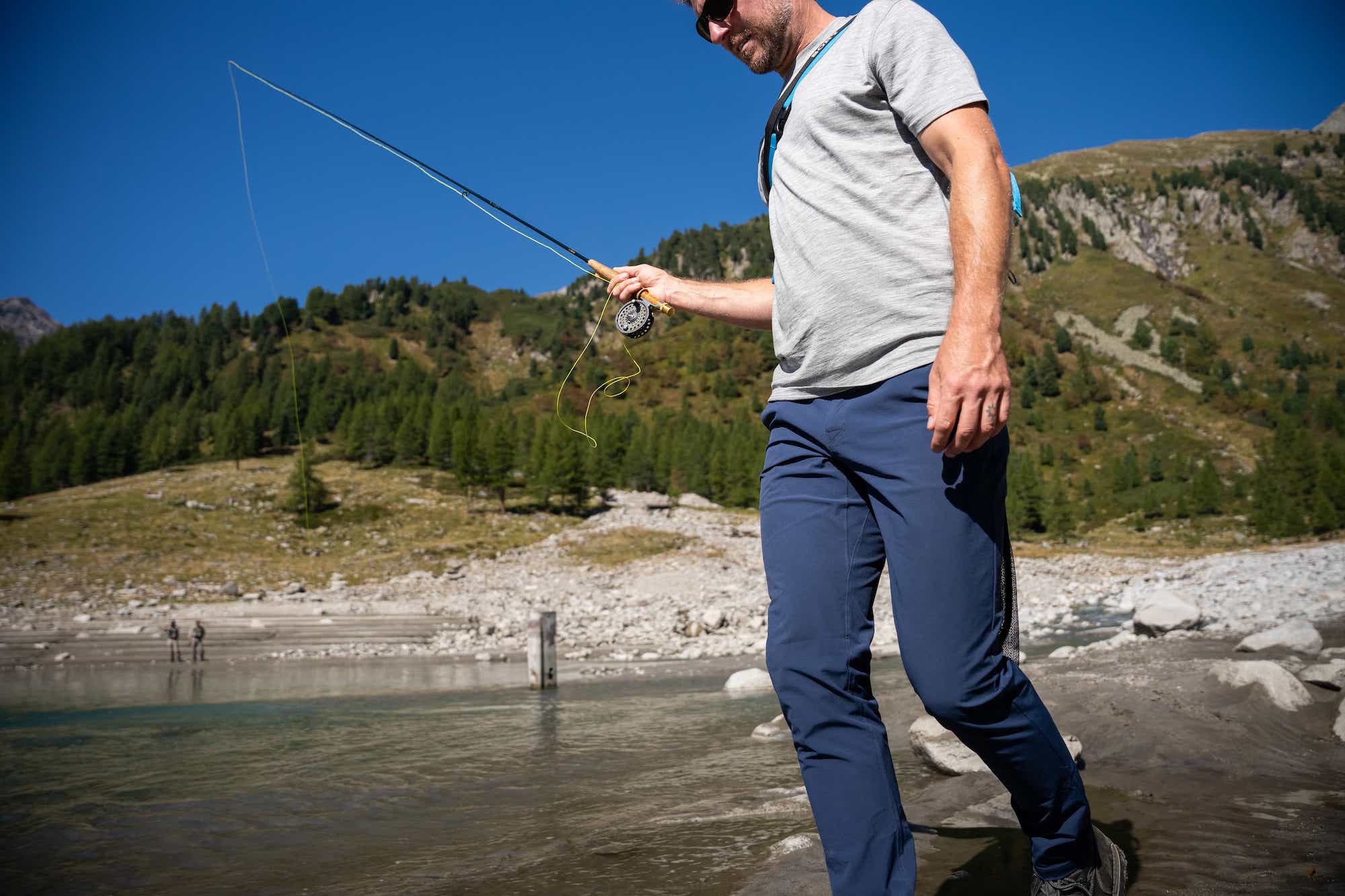If You’re Gearing Up for a National Park Trip, Start With a National Park Checklist
If you’re gearing up for a national park trip, it's imperative to come prepared. National Parks are busier than ever, making preparation & planning much more difficult than just a few years ago.
This is your ultimate guide to get the most out of your national park trips this year. We will cover everything from what to pack, how to get reservations & permits, and what to expect out of your national park trip. A well-thought-out national park checklist will save you time and stress—whether you're camping, hiking, or just enjoying the views.
Let’s dive in.

What to Expect During Your National Park Trip
Here are some things you should expect when planning a national parks trip, all of which should be factored into your national park checklist:
Costs
There’s a lot that goes into keeping national parks pristine and beautiful. This means clean-up costs, rangers, bathroom facilities, wildlife conservation, and more. This is why entrance fees are fairly standard when you’re visiting a national park.
Plan on entrance fees costing anywhere from $25 to $35 per vehicle to enter, but for a full updated list of fees by park, click here. Annual passes are also available and are well worth the investment if you plan on visiting more than a couple of national parks in a year.
This pass is the America The Beautiful pass and it costs $80 and covers entrance fees to over 2,000 federally recognized sites including national parks and wildlife refuges.
If you plan on camping at any campsites within the national parks, plan on making a reservation ahead of time. Be sure to include this step on your national park checklist so you’re not scrambling last minute.
Reservations
If you’re visiting a national park during peak season, expect that you may need to make a few reservations ahead of time. You may need reservations for campsites, guided tours, permits for specific trails, and even entrance tickets for peak seasons.
Animal Safety
One of the biggest draws to national parks is the pristine wilderness you find in the parks. This wilderness draws in not just people, but animals as well.
Always be sure to follow guidelines for the wild animals you may encounter. Add bear spray, proper food storage, and wildlife safety guidelines to your national park checklist.
Visitor Center
One resource you should always utilize when visiting a national park is the visitor's center. You’ll find up-to-date information about trail closures, safety, tours, permits, and plenty of educational resources.

The Ultimate National Park Packing Checklist
Coming prepared will make all the difference in the quality of your experience in these beautiful parks. Use this national park checklist to ensure you’re well-prepared for your trip:
Clothing Essentials for Your National Park Checklist
Here at TEREN, we believe it's important to pack the right clothes so you’re not bogged down with excess stuff. Always bring layers and anticipate the weather changing at a moment's notice. Here’s what we include in our national park checklist:
Lightweight, moisture-wicking shirts
We recommend bringing a high-quality moisture-wicking shirt to ensure you stay dry, comfortable, and odor-free. The Traveler Tee is the perfect addition to any wardrobe and ideal for any camping trip since its anti-microbial, temperature-regulating, and ultra-soft.
Long-sleeved shirts
Regardless of which park you visit, you’re most likely going to spend a lot of time outdoors. A long-sleeve shirt not only serves as an additional layer to keep you warm but also protects you from the sun & bugs.
The Traveler Tee comes in a long-sleeved version as well and offers all of the same great benefits of the short-sleeved version.
Quick-drying pants & shorts
It's important to bring clothing you can rely on when you’re heading out into the national parks. We made the Lightweight Traveler pants to be the perfect do-everything pants. They’re stylish, bug-repellant, stretchy, quick-drying, moisture-wicking, anti-microbial, UV protectant, and more.
Truly, you can wear them through the wilderness on a 40-mile excursion and immediately finish with a cold brew at a nice restaurant without feeling out of place. And since they’re anti-microbial you won’t have to worry about them smelling bad either.
The same goes with our Daily Driver Shorts, they’re the perfect pair for any occasion and they also come in a 7-inch inseam option.
Hiking shoes
Never underestimate the importance of having a great pair of hiking shoes. Take it from someone who’s lost a few toenails after long backpacking trips and used to chronically sprain my ankles.
We recommend going into a store with staff well-versed in recreational shoes. Every foot is different which is why we won’t make a specific recommendation for you. Look for a pair that feels good all around, but is also waterproof, provides stability, and gives your feet room to swell a little bit.
If you’re prone to ankle sprains, we recommend picking up some hiking boots because they give your ankles some extra stability. They’re also better at keeping water out if you’re hiking through any river crossings.
Socks suitable for hiking
Bring along a few pairs of great-quality socks. They should be durable, odor-resistant, moisture-wicking, and not so bulky they make your shoes feel tight.
A quality outer shell
Staying dry & comfortable while out in the wilderness can easily make or break your trip. We created the Cloudland Shell to be the ultimate companion for outdoor adventures big & small.
It doubles as a rain jacket & windbreaker and is guaranteed to keep you dry in the most severe weather. It also has a breathable lining that will keep your body temperature regulated. It’ll help keep you warm in the winter months, but also dry in the summer months during the rainy season.
This shell is packable, and durable, and will ensure you’re comfortable even if the weather takes a turn.
A hat with a wide brim for sun protection
A lot of US national parks are at high elevations or have very exposed terrain. Keep yourself protected from the sun by bringing along a wide-brimmed hat. UV exposure is far more dangerous in higher elevations than on a beach, so always come prepared.
Sunglasses with UV protection
Prolonged exposure to UV rays can modify the protein in your eyes, cause cataracts, and damage your eyesight. Always bring along a high-quality pair of shades.

Hiking Gear & Equipment to Add to Your National Park Checklist
Here is a quick guide to some of the hiking essentials and equipment to bring on your park trip:
- Lightweight hiking backpack with padded shoulder straps
- Reusable water bottle or hydration system
- Portable water filters or purification tablets
- Trail maps and compass or GPS device
- Multi-tool or knife
- Bear spray
- Lightweight, quick-drying towel
- Power bank or power station
- Hiking poles
- Headlamp or flashlight with extra batteries
Small first aid kit with essentials like bandages, antiseptic wipes, and pain relievers
Camping Equipment for Your National Park Checklist
If you plan on camping, here is a list of items you should include. Remember that wildlife safety is even more important if you’re camping, so follow regulations, carry bear spray, and always use provided bear boxes if you’re camping in bear country.
- Tent with stakes and guylines
- Sleeping bag suitable for the season
- Sleeping pad or air mattress for insulation and comfort
- Camping stove or portable cooking system
- Lightweight cookware and utensils
- Biodegradable soap and small towel for washing dishes
- Camp stove
- Fire starter
Personal Items
These are some essentials to keep in your hiking backpack:
- Your I.D. card, national parks pass, and any necessary permits
- Cash and credit cards
- Cell phone with portable charger or solar charger
- Insect repellent
- Sunscreen with high SPF
- Lip balm with SPF
- Personal hygiene items (toothbrush, toothpaste, etc.)
- Prescription medications and basic first-aid supplies
Food & Snacks
Your food needs will vary depending on your accommodations and the outdoor activities you’re planning. Regardless, you’ll want to bring some nutrient-dense snacks to keep on you.
- Lightweight, non-perishable food items (energy bars, nuts, dried fruits, etc.)
- Reusable utensils and containers
- Collapsible water bowl if traveling with pets
Don’t Forget These Extras for Your National Park Checklist
Here are a few miscellaneous things you should consider bringing along with you if you have the space:
- Camera or smartphone for capturing memories
- Binoculars for bird watching or wildlife observation
- Travel guidebook or nature identification guide
- Garbage bags for carrying out waste (Follow Leave No Trace principles)
- Portable seating pad or lightweight portable chair for resting breaks

Navigating Reservations & Permits
Many national parks now require timed entries, permits, and reservations for peak seasons. Make this a priority on your national park checklist—checking the park's website for the latest info could make or break your trip.
Grand Teton National Park— reservations.Crater Lake— reservations.New River Gorge—reservations.Yellowstone National Park—reservations.Sequoia National Park—reservations.Grand Canyon National Park—reservations.Joshua Tree—reservations.Zion National Park—reservations.Glacier National Park—reservations.Arches National Park—reservations.
Frequently Asked Questions
Here are some commonly asked questions about visiting national parks:
Are pets allowed in national parks, and what do I need to pack for them?
Check the park’s specific rules, but if pets are allowed, include food, leash, waste bags, and a collapsible bowl on your national park checklist.
How can I find updated information about the national park I plan to visit?
Use the official park websites and visit the visitor center when you arrive.
How can I minimize my environmental impact?
Add Leave No Trace principles to your national park checklist. Reusable items, respect for wildlife, and proper waste disposal go a long way.
Final Thoughts on Creating Your National Park Checklist
We hope this guide helps you craft the perfect national park checklist to ensure your adventure is smooth, safe, and unforgettable.
Just remember—nature is unpredictable, so pack with flexibility in mind. With a thoughtful checklist in hand, you’ll be ready for everything from bluebird skies to sudden storms, and everything in between.






